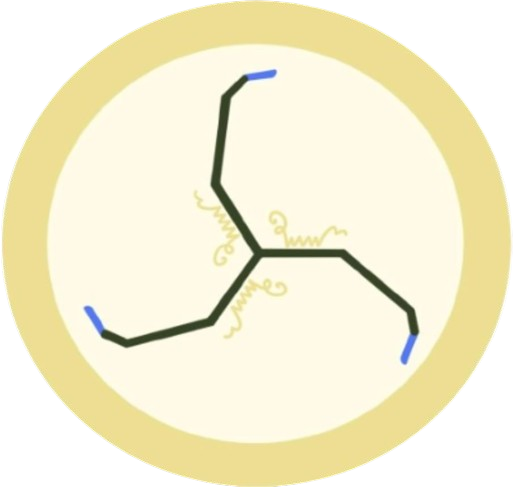What is a drug?
A drug is a substance that can alter the physiology or psychology of its user. It is used to prevent, diagnose, treat, or relieve symptoms of a disease or abnormal condition. There are 6 classes of drugs: Stimulants, depressants, opioids, hallucinogens and dissociatives, inhalants, and cannabis. Each has a distinct function and affects the user’s body differently.
For example, stimulants increase the user’s alertness, blood pressure, heart rate, breathing rate, and blood glucose levels while depressants help the user relax and slow down their vital function. Opioids are painkillers and produce a sense of euphoria. Hallucinogens alter the user’s reality by affecting mood, sensory perception, and muscle control. Dissociatives make the user feel as if they are watching themselves from outside of their bodies. Inhalants cause brief feelings of euphoria while cannabis acts like a hallucinogen with depressant-like effects. Drugs can be taken as pills, injected, combined with a liquid, and inhalers.
Current methodologies and procedures in drug design and development are:
- Computer-Aided Drug Design (CADD): Uses computer simulations and modeling to design and optimize small molecules or biological molecules as potential drugs.
- Molecular Dynamics Simulations: sample the configuration space and generate a trajectory that follows molecular movements as a function of time; are used to study the behavior of molecules and design new compounds.
- Virtual screening: Used to search libraries of small molecules to identify structures that can bind to the drug
- High-Throughput Screening (HTS): Used to screen large libraries of small molecules for biological activity.
- Structure-based design: Used to design the chemical structure of a drug based on its biological target’s structure.
- Ligand-based design: Uses known ligands or small molecules that interact with a target protein to design new compounds.
- Pharmacophore modelling: used to identify novel compounds that satisfy the pharmacophore requirements and thus are expected to be biologically active.
- QSAR modelling: Uses quantitative structure-activity relationships to predict the biological activity of small molecules.
There have been a lot of innovations in the field of drug design and development in the past few decades. Some of these innovations are:
- AI and machine learning: Analyzes large amounts of data accurately and efficiently, thus improving the accuracy and efficiency of the drug design
- Generative models: Used to generate new small molecules with potential biological activity
- Precision models and personalized therapy: Used to design drugs for specific populations or patients
- Gene editing and gene therapy: Used to design new drugs that can treat genetic diseases
- Immunotherapy and cancer treatment: Checkpoint inhibitors block certain proteins to keep immune responses from being too strong
- Nanotechnology: Used in drug delivery, improves the safety and efficacy of drugs
- 3D printing: Is used in pharmaceuticals to improve the manufacturing process
Overall, drug design and development is a rapidly changing field with great potential to cure complex diseases and rare genetic mutations. However, it can also have risks and side effects that can lead to harmful consequences. It is important to recognize the importance of responsible drug use and prioritize safety and efficacy in their development, prescription, and consumption. Healthcare professionals, patients, and the general public must work together to ensure that the drugs are used appropriately and effectively.
- Kshiti Kulkarni
Sources:
- “Computer-Aided Drug Design.” Computer-Aided Drug Design — an Overview | ScienceDirect Topics, www.sciencedirect.com/topics/pharmacology-toxicology-and-pharmaceutical-science/computer-aided-drug-design#:~:text=CADD%20is%20a%20modern%20computational,used%20to%20optimize%20identified%20leads. Accessed 11 July 2024.
- Sotriffer, Christoph A. “Molecular Dynamics Simulations in Drug Design.” SpringerLink, Springer Berlin Heidelberg, 1 Jan. 1970, link.springer.com/referenceworkentry/10.1007/3–540–29623–9_0820#:~:text=MD%20simulations%20sample%20the%20configuration,of%20biological%20and%20pharmaceutical%20interest.
- “High Throughput Screening.” High Throughput Screening — an Overview | ScienceDirect Topics, www.sciencedirect.com/topics/biochemistry-genetics-and-molecular-biology/high-throughput-screening#:~:text=High%2Dthroughput%20screening%20(HTS)%20refers%20to%20the%20integration%20of,throughout%20pharmaceutical%20R%26D%20%5B2%5D. Accessed 11 July 2024.
- “Structure-Based Drug Design (SBDD).” REVIVE, revive.gardp.org/resource/structure-based-drug-design-sbdd/?cf=encyclopaedia#:~:text=Definition%3A,structure%20of%20its%20biological%20target. Accessed 11 July 2024.
- “Ligand-Based Drug Discovery.” Jubilant Biosys, 8 Mar. 2021, www.jubilantbiosys.com/services/ligand-based-drug-discovery/#:~:text=Ligand%2Dbased%20drug%20discovery%20.
- Blanco-González, Alexandre, et al. “The Role of AI in Drug Discovery: Challenges, Opportunities, and Strategies.” Pharmaceuticals (Basel, Switzerland), U.S. National Library of Medicine, 18 June 2023, www.ncbi.nlm.nih.gov/pmc/articles/PMC10302890/.
- Author links open overlay panelXiangxiang Zeng 1, et al. “Deep Generative Molecular Design Reshapes Drug Discovery.” Cell Reports Medicine, Cell Press, 27 Oct. 2022, www.sciencedirect.com/science/article/pii/S2666379122003494.
- “Immunotherapy for Cancer.” Immunotherapy for Cancer — NCI, www.cancer.gov/about-cancer/treatment/types/immunotherapy#:~:text=Several%20types%20of%20immunotherapy%20are,responses%20from%20being%20too%20strong. Accessed 11 July 2024.
- “Types of Drugs: Opioids, Depressants, Stimulants, Hallucinogens and More.” The Recovery Village Drug and Alcohol Rehab, 12 July 2023, www.therecoveryvillage.com/drug-addiction/types-of-drugs/.
- “Drug Design and Development — Drug Design and Development.” MSD Manual Consumer Version, www.msdmanuals.com/en-in/home/drugs/overview-of-drugs/drug-design-and-development. Accessed 11 July 2024.
- “NCI Dictionary of Cancer Terms.” Comprehensive Cancer Information — NCI, www.cancer.gov/publications/dictionaries/cancer-terms/def/drug. Accessed 11 July 2024.
*Disclaimer: This article has also been posted to our Medium. NernstNaK is the rightful owner of this work on both our website and Medium, and thus stresses that there has been no plagiarism or copying on either account.*

